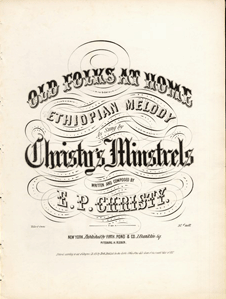Foster's intended meaning (1850s): No matter how far we may travel or what sadness the world imposes on us, all our hearts ache for the best memories of childhood, the security of a family and parents ("old folks"), the familiarity of a home.
Post-reconstruction era (1870s-1890s): Blacks yearn to go back to the plantation, where they were better off. (The song was performed condescendingly and with exaggerated dialect.)
Harry T. Burleigh and Antonin Dvorak (1890s): A "heart song" of the American people, a folk song alongside slave's spirituals.
W.E.B. DuBois (ca. 1900): Old Folks at Home is legitimately considered an authentic song of the Negro race, who have adopted it to express their own emotions.
W.C. Handy ("Father of the Blues" in his autobiography, 1955): Old Folks at Home, My Old Kentucky Home, and Old Black Joe helped bring about emancipation, and owe something to the "well of sorrow" that gave rise to the blues.
Civil Rights Era (1950s-1960s): Any song ever associated with negative ethnic images should be eliminated.
Postmodern era (1980s-1990s): Any song (even The Star Spangled Banner and America) can be interpreted both positively and negatively. Old Folks at Home has hundreds of meanings around the world.

